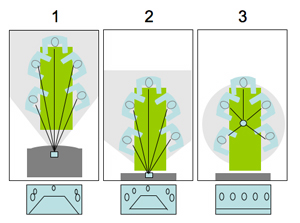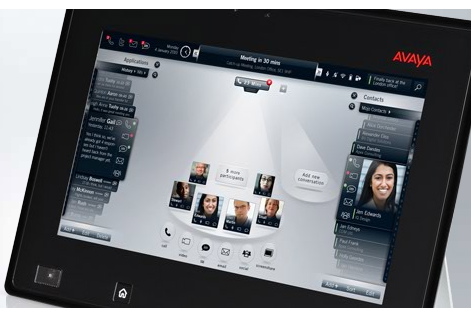 In this sketch on left, Brockmann & Company showcases some of the differences in emerging video conference room gear. In figure 1, we have the classic room design. Big vacuum tube monitor showing the remote location and an inset window of what they see of your location. Note that the participants have to be angled to be seen and to see the far end monitor.
In this sketch on left, Brockmann & Company showcases some of the differences in emerging video conference room gear. In figure 1, we have the classic room design. Big vacuum tube monitor showing the remote location and an inset window of what they see of your location. Note that the participants have to be angled to be seen and to see the far end monitor.
The blue graphic on the bottom shows what the perspective on the monitor is like. Heads farther away from the camera are smaller.
Generally, people farther away from the camera appear smaller, often to the point where facial features are obscured by the low resolution of the monitor, or by the pixelation processes of the compression technique.
In figure 2, we see the advantages of flat screen monitors on room geometry. The table can get right up to the camera since the monitor can be easily mounted directly on the wall. Users around the conference table do appear larger than in figure 1 since they are closer to the camera. The camera must have a wider field of view to accommodate the useful sitting space.
Figure 3 shows the 360 degree approach of the Microsoft camera described in an earlier entry. Here the speakers are equidistant from the camera, but do need to lean as before towards the monitor so as to see the view of the far end. In most conferences users will appear with heads slightly cocked since they'll be turned to see the far end monitor.
There are other approaches such as the telepresence approach.










